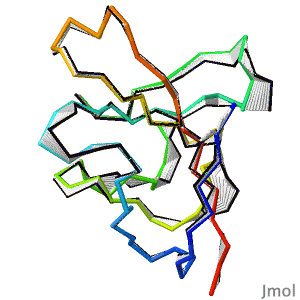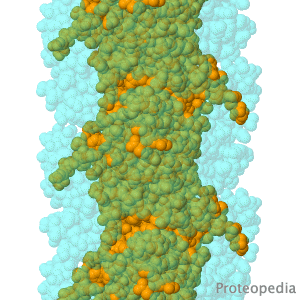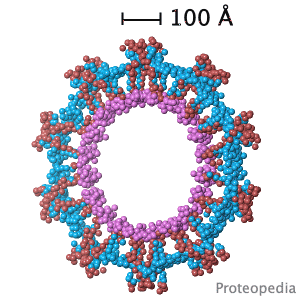Main Page
From Proteopedia
| Line 1: | Line 1: | ||
<table id="tableColumnsMainPage" style="width:100%;border:2px solid #ddd;border-collapse: collapse;table-layout: fixed; "> | <table id="tableColumnsMainPage" style="width:100%;border:2px solid #ddd;border-collapse: collapse;table-layout: fixed; "> | ||
<tr><td colspan='4' style="background:#F5F5FC;border:1px solid #ddd;"> | <tr><td colspan='4' style="background:#F5F5FC;border:1px solid #ddd;"> | ||
| - | <span style=" | + | <span style="border:none; margin:0; padding:0.3em; color:#000; font-style: italic;"><b>Because life has more than 2D</b>, Proteopedia helps to understand relationships between structure and function. <b>Proteopedia</b> is a free, collaborative 3D-encyclopedia of proteins & other molecules.</span> |
<span style="top:+0.2em; font-size:1.2em; padding-right:5px;float:right;">'''''ISSN 2310-6301'''''</span> | <span style="top:+0.2em; font-size:1.2em; padding-right:5px;float:right;">'''''ISSN 2310-6301'''''</span> | ||
| - | <span style="top:+0.2em; font-size:1.2em; padding-left:5px;">The free, collaborative 3D-encyclopedia of proteins & other molecules<br></span> | ||
</td></tr> | </td></tr> | ||
<tr> | <tr> | ||
Revision as of 12:31, 18 October 2018
|
Because life has more than 2D, Proteopedia helps to understand relationships between structure and function. Proteopedia is a free, collaborative 3D-encyclopedia of proteins & other molecules. ISSN 2310-6301 | |||||||||||
| Selected Pages | Art on Science | Journals | Education | ||||||||
|---|---|---|---|---|---|---|---|---|---|---|---|
|
|
|
|
||||||||





